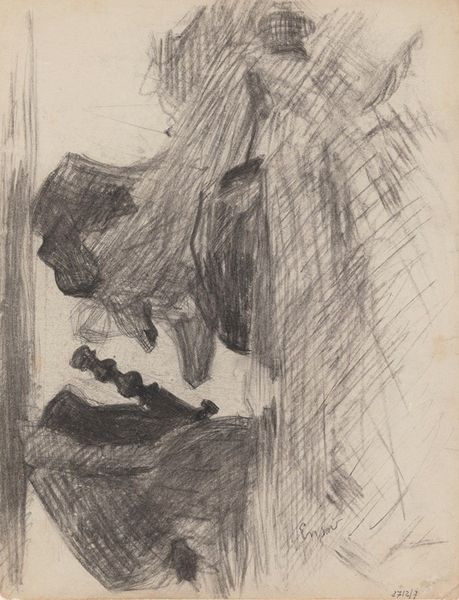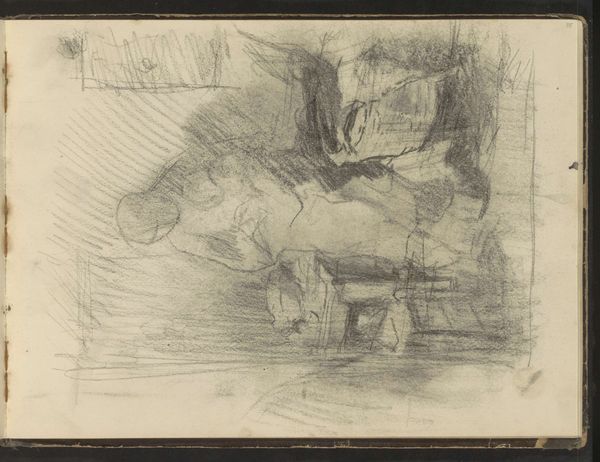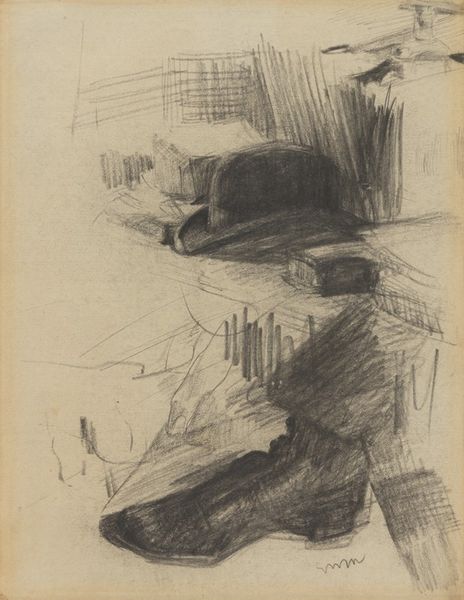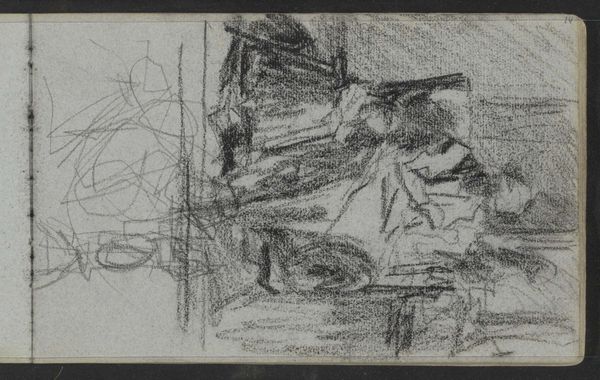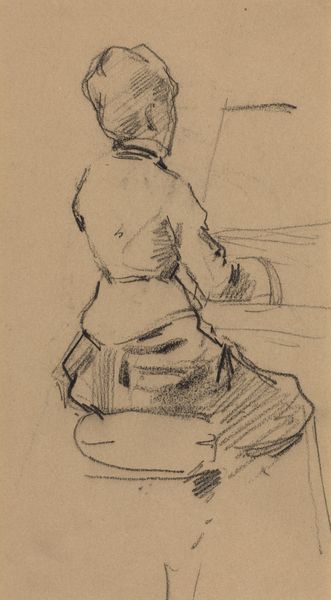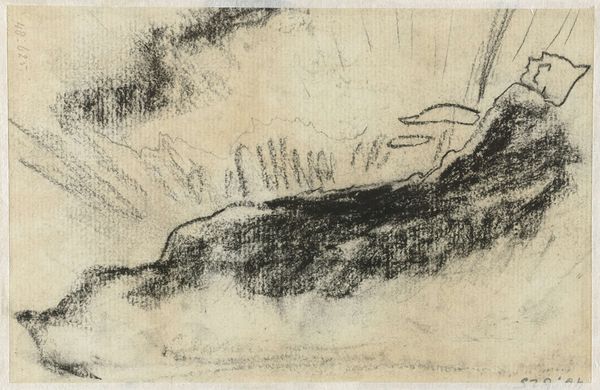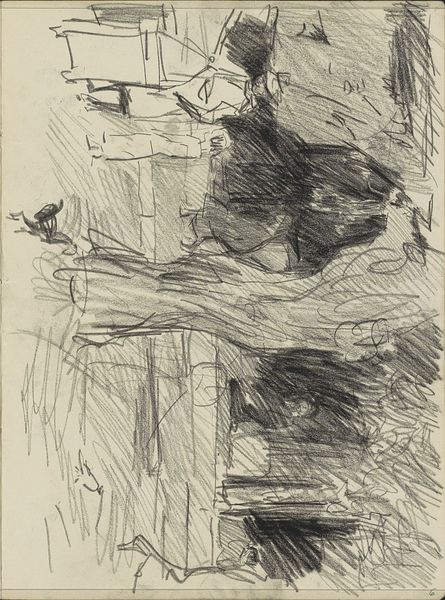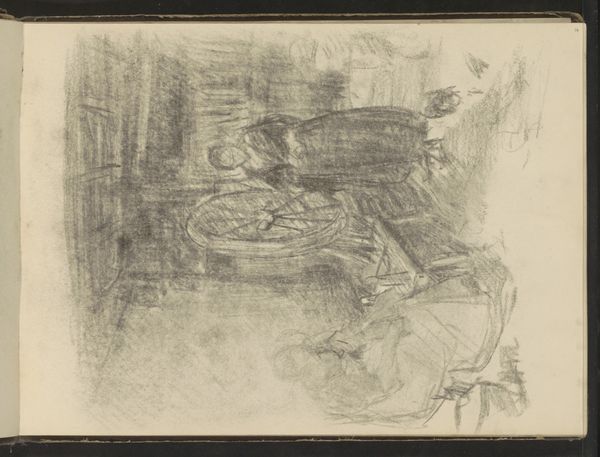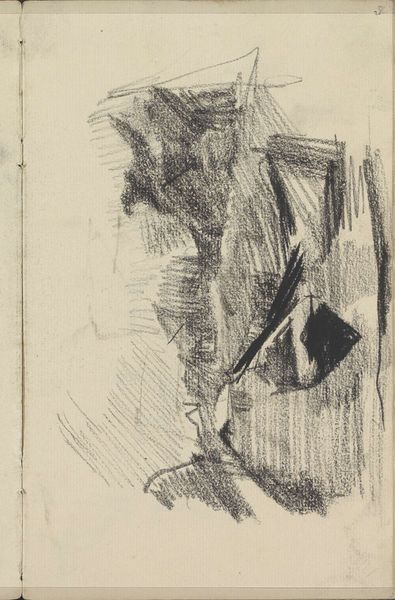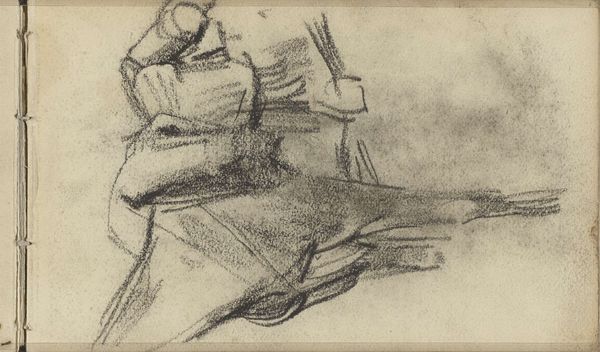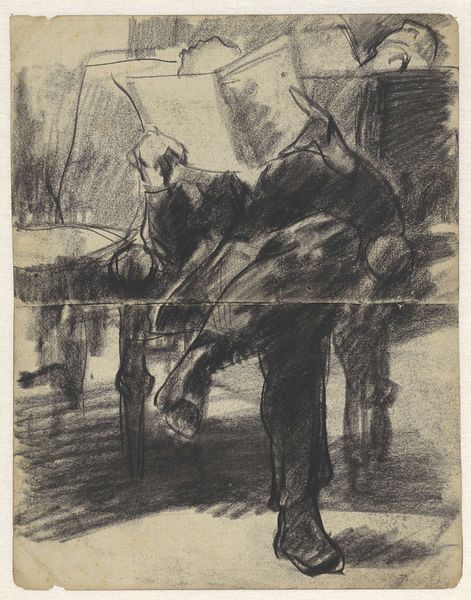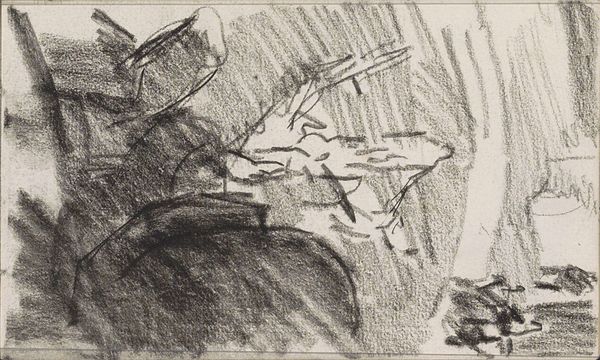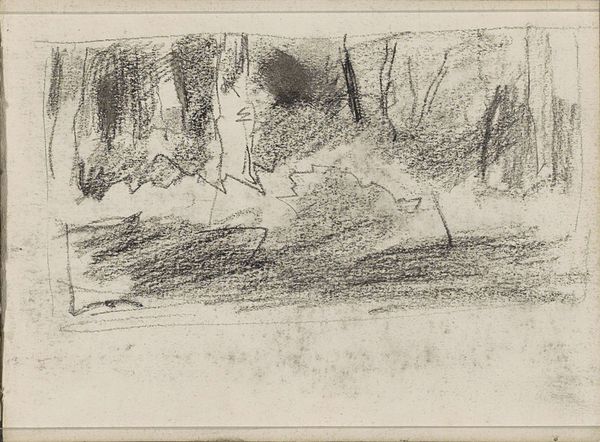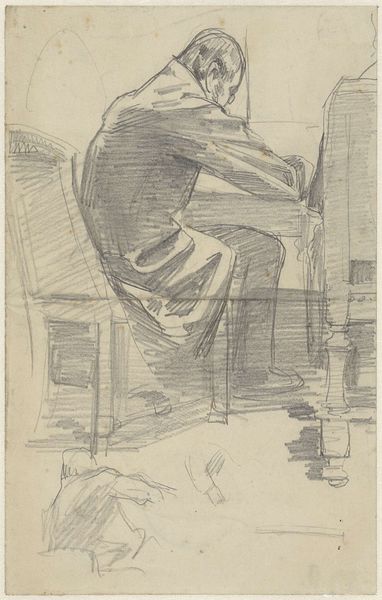
drawing, pencil, graphite
#
drawing
#
impressionism
#
charcoal drawing
#
pencil drawing
#
pencil
#
graphite
#
academic-art
#
realism
Copyright: Public Domain: Artvee
Curator: Right, let's spend a few moments with James Ensor’s “Material Study” from 1880. It’s a drawing rendered in pencil and graphite, a study in the textures and tones. What strikes you immediately about this piece? Editor: There's a subdued kind of melancholy hanging over it. The gray tones feel heavy, the lines almost claustrophobic. It's more than just draped fabric; there's a quiet story woven into the shadows. Curator: I see it. He was only 20 years old at the time, grappling with form and representation in what we would call his early, Realist style, well before the masks and mayhem he'd become known for. Note the close, parallel hatching that gives the fabric its volumetric heft and tactile quality. Editor: True. I keep coming back to that light—or the lack of it, rather. How Ensor teases out form with these incredibly subtle gradients. It gives everything a haunted quality. Is he experimenting with realism here, or exploring an interior world through these objects? Curator: Probably both, which is what makes this so much more than just a formal study. Consider the folds: they’re not just mimicking real drapery but composing rhythmic arrangements. Ensor uses classical form to express more intangible impressions; they function almost as psychological topography. Editor: Absolutely. And that cramped space, the lack of air around the subject, emphasizes this closed, intimate feel. It makes you want to adjust the light somehow, you know, let in a bit of sun. Perhaps even glimpse the direction he would later take towards such intensely contrasting colors, too. Curator: Yes, this drawing represents a fundamental basis for a lot of the color theory that explodes out of his more mature compositions. From his muted palette here in '80 to the carnivalesque expressionism he would evolve to embody is a radical progression over the intervening decade, from near total dark, to explosions of radiant artificial color and back. Editor: Well, now I feel like I've peered behind the curtain a little. I see the seeds of something really profound even here, where it looks merely like dark cloth sketched on grayed paper. Curator: Indeed. Next time you see one of his more famous works, maybe you’ll feel you’ve met him long ago on a somber afternoon when you’ve met a study of raw form, like a shared silence.
Comments
No comments
Be the first to comment and join the conversation on the ultimate creative platform.
